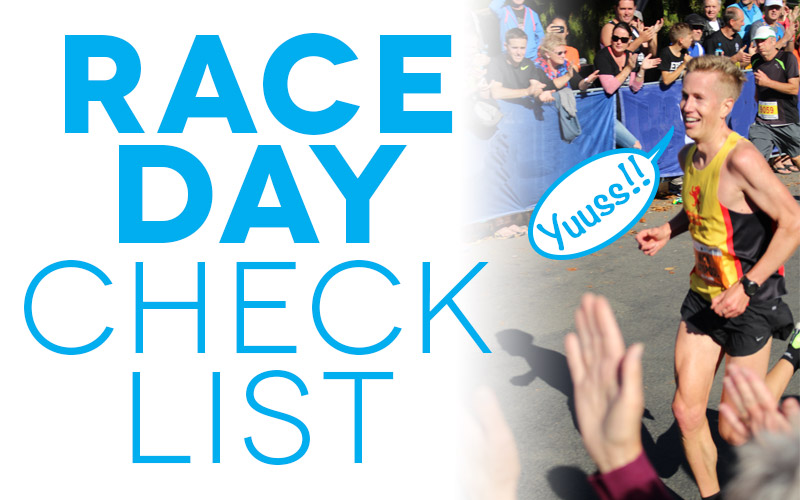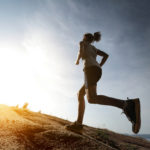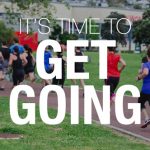By Hayden Shearman // I don’t want to freak you out, but despite perfect training and ideal preparation, many a marathon has gone awry from forgetting something on race day. So here are the key things to remember and biggest pitfalls to avoid on marathon day.

AVOIDING CLOTHING MALFUNCTIONS
I’ve heard a story of a man arriving at a marathon start line only to realise he had left his shorts at home. Rather than waste all that training, he just ran in his undies. Don’t be that guy. Please.
So here’s a little clothing checklist to go through A) before you leave for Rotorua (and before the shops close), B) to check and lay out the night before the race, and C) when you leave for the race in a sleepy, nervous daze:
- Shoes (be sure to have worn these many times before — race day is not the time to break in a new pair of kicks!)
- Socks (again, tried and tested)
- Compression gear (if you use it)
- Shorts/tights
- Underwear
- Tee/singlet
- Discardable layers if the morning is wet and/or cold (an old jumper and some gloves and a poncho if it is raining are ideal)
- Hat (if it is raining I find the visor on a running cap perfect for keeping the rain off your face)
- Sunglasses (if required)
AVOIDING GEAR MALFUNCTIONS
You don’t need a lot of gear to run a marathon, but these few items play a critical role, so be sure to have gone through this check list several times:
- Watch (charged to 100% and software updated earlier in the week)
- Watch charger (just be sure to take it with you if you’re arriving from out of town)
- Fuel belt (again, you should have practised with this and it should serve a key role in your race day fuelling strategy)
- Gels, lollies, dates or other energy source (again, just use something that is tried and tested for you!)
- Anti-chaff gel (I’m a big fan of baby oil for this purpose, but even cooking oil can do the job!)
- Sun screen (if you’re out on the roads for a few hours you will soak up some serious quantities of UV rays, so slop on some lotion before you start)
- Shoe laces … make sure they’re tied well, double-knotted and tucked away
- Headphones … leave them at home or in your gear bag (Rotorua is not a safe course to have your own music blaring in your ears unfortunately)
- Race bib and timing transponder (and pins!!!)
- Pace chart (whether you have an official wrist band or you just write your goal splits on your wrist, having a cue about time goals and pacing is important for reasons below)
- Asthma inhaler (or other medication you might need to carry with you — and if you have a medical condition be sure to carry a medical bracelet and/or write your conditions/allergies on the back of your race bib)
AVOIDING NUTRITION MALFUNCTIONS
By now you should have practised your full nutrition strategy and have worked out what works for you and what doesn’t. But here’s a rough guide that I follow that you could try on your final few remaining training runs:
- Breakfast: Wake 3 hours before race start and eat breakfast straight away (I find carbs that are easy on the tummy ideal e.g. a banana and honey on toast or oats with fruit ).
- Start Hydrated: Begin the race in a hydrated state (avoid cramming water down but just keep a bottle nearby that you can sip on as you feel). A good guide as to whether or not you are hydrated is whether your pee is relatively clear.
- Fluids: During the race I will usually estimate a millilitres/hour rate that I will aim to drink. For me this is usually about 600ml/hour, which works out at 3 small cups of water every 20 minutes. But you may be different and it’s important that you have your own plan and also listen to your body during the race and adjust your plan for the conditions.
- Energy: After breakfast I won’t touch any food until the race has begun. This encourages your body to begin the race in a more fat-burning state, whereas if you were to just cram sugar down, it would already be switched into glycogen burning mode. But once the race starts you will want to have a bit of a plan. My go-to is a gel or lollie every 45mins. This may or may not work for you. So you will need to draw on what has worked for you in training. And do remember that the electrolytes served on the course do have glucose in them, so you will be getting some fuel from here. … Oh and there’s a McDonald’s at 34.5k if you get desperate!
- Technique: Drinking and eating while running is a skill all in itself. So I recommend people to slow down to a walk in the aid stations. Consume all the drink or gels you plan to, drop the cup in a bin, and then get back to running. This will reduce your chances of bloating or the stitch massively.
AVOIDING BOWEL MALFUNCTIONS
Aside from finding a good spot on the start line near other runners with a similar target time, the key is to spend most of your time either relaxing or sitting on a toilet! Give yourself every chance of clearing your bowels and getting rid of a nervous one, so there’s less chance of things going wobbly during the run!
And if they do go wobbly, don’t worry, I’ve been there, done all that!
AVOIDING PACING MALFUNCTIONS
This is the absolute number one thing you can do to make sure you enjoy your marathon day: pace yourself!
Have a realistic time goal in mind and set this as your upper limit for speed over the first half of the race. In the marathon you should reach 21k feeling like you’ve just done a warm up. The pace should feel EASY. Because it WILL get hard. Believe me.
If you’re feeling good at halfway or about two thirds in, then by all means, step on the gas. But, until then, be conservative, enjoy the moment and soak up the atmosphere and views.
Remember, if your first half is about pacing, your second half will be about passing!
Happy running.
This is a series of blogs all about getting you trained up and raring to go for the 2017 Rotorua Marathon (or half or quarter).
Grab a fully personalised and tailored training plan to take you to your next race.



